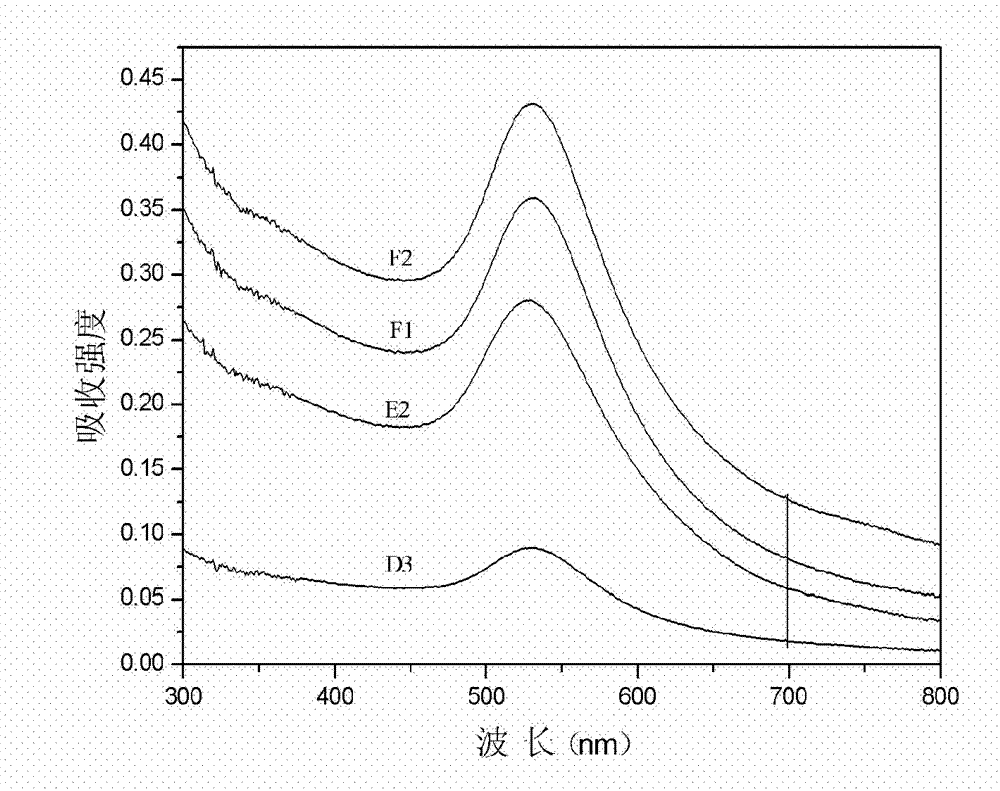Detection method of lead ion
A detection method, lead ion technology, applied in the field of ion detection, can solve the problems of strong toxicity, poor stability, expensive reagents, etc., and achieve the effect of low detection cost, small sampling volume, simple and convenient operation
- Summary
- Abstract
- Description
- Claims
- Application Information
AI Technical Summary
Problems solved by technology
Method used
Image
Examples
Embodiment 1
[0026] Detection of lead ions in water samples
[0027] 1) Prepare lead ion aqueous solutions of different concentrations:
[0028] Mix lead nitrate with ultrapure water to prepare 4×10 -7 M (mol / L) C1 solution, the concentration is 2×10 -6 C2 solution of M at a concentration of 8×10 -6 D1 solution of M at a concentration of 2 × 10 -5 D2 solution of M at a concentration of 4×10 -5 D3 solution of M at a concentration of 8×10 -5 E1 solution of M at a concentration of 1.2×10 -4 E2 solution of M at a concentration of 1.6×10 -4 E3 solution of M at a concentration of 2 x 10 -4 F1 solution of M at a concentration of 4 × 10 -4 F2 solution of M.
[0029] 2) Preparation of detection solution
[0030] Take 6mL of 5mmol / L chloroauric acid aqueous solution and add it to 100mL of deionized water, add 20mmol / L cetyltrimethylammonium bromide aqueous solution 4mL under stirring conditions, and then slowly add freshly prepared 3 mL of sodium borohydride aqueous solution with a concen...
Embodiment 2
[0044] Detection of lead ions in blood samples
[0045] 1) Preparation of detection solution
[0046] The procedure is the same as the preparation of the detection solution in Example 1, except that dodecyltrimethylammonium bromide is substituted for hexadecyltrimethylammonium bromide.
[0047] 2) Processing of blood samples
[0048] Add 3mol / L nitric acid aqueous solution to completely oxidize the organic components in the blood sample. The volume ratio of nitric acid aqueous solution to blood is 1:5, then drop 0.1mol / L sodium hydroxide to neutral, and filter the obtained filtrate. for pretreated blood samples.
[0049] 3) Detection of lead ions in blood samples
[0050] First, take 5 mL of the gold nanoparticle detection solution prepared in Example 2, and then adjust the pH value to 8.5 with 0.1 mol / L sodium hydroxide aqueous solution to obtain a gold nanoparticle detection solution with a pH value of 8.5.
[0051] Subsequent steps are the same as the detection of lead ...
Embodiment 3
[0053] Detection of lead ions in food
[0054] The preparation process of the detection solution is the same as in Example 1, except that trioctylmethylammonium chloride replaces hexadecyltrimethylammonium bromide.
[0055] Dissolve the food to be tested in water to obtain a food sample, add concentrated nitric acid with a concentration of 98% to the food sample, the volume ratio of concentrated nitric acid to the food sample is 1:1, so that the organic components in the food sample are completely oxidized, and then Add 0.1mol / L sodium hydroxide dropwise to neutrality, and filter the obtained filtrate to be the pretreated food sample. Other operations are roughly the same as step 3) in Example 2, except that the pH value of the detection solution is adjusted to 10.
PUM
 Login to View More
Login to View More Abstract
Description
Claims
Application Information
 Login to View More
Login to View More - R&D
- Intellectual Property
- Life Sciences
- Materials
- Tech Scout
- Unparalleled Data Quality
- Higher Quality Content
- 60% Fewer Hallucinations
Browse by: Latest US Patents, China's latest patents, Technical Efficacy Thesaurus, Application Domain, Technology Topic, Popular Technical Reports.
© 2025 PatSnap. All rights reserved.Legal|Privacy policy|Modern Slavery Act Transparency Statement|Sitemap|About US| Contact US: help@patsnap.com



